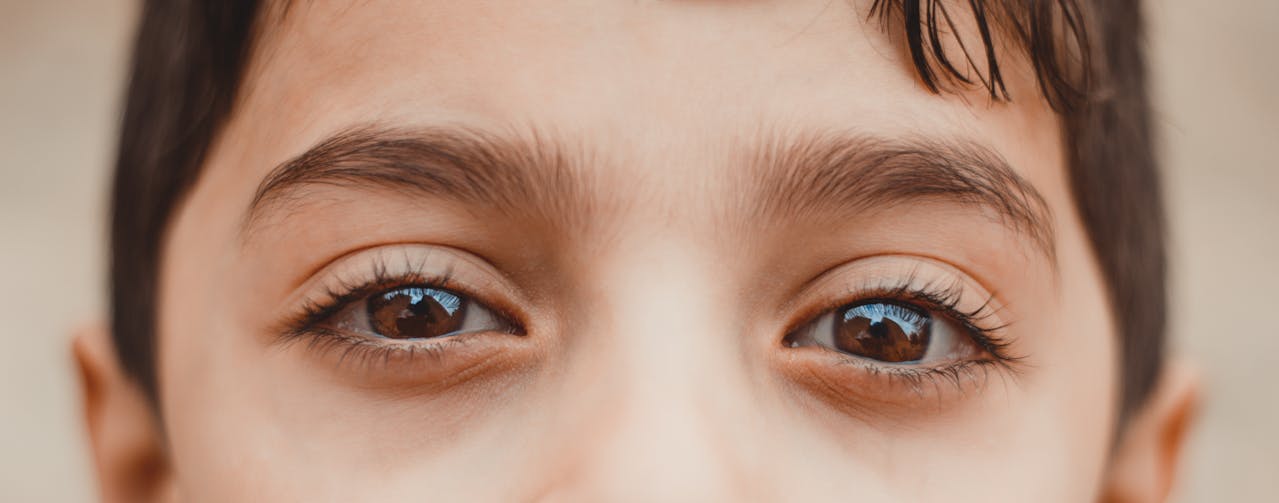
Myopia in Kids: What Parents Should Know & New Treatment Options
Nearsightedness, or myopia, is more than just a pair of glasses for your child. It’s a growing issue affecting millions of kids, and it’s getting worse, earlier, and faster than it used to.
If you’ve noticed your child squinting at the board, holding tablets too close, or complaining of blurry distance vision, you’re not alone. Myopia is on the rise, and parents across Texas are asking:
What’s causing it, and what can we do to slow it down?
What Is Myopia?
Myopia means your child can see nearby objects clearly, but distant ones appear blurry. It typically develops between ages 6 and 14 and tends to worsen as the eyes grow.
It happens when the eye grows too long or the cornea is too curved, causing light to focus in front of the retina instead of directly on it.
Why Myopia in Children Is a Growing Concern
Today, more than 40% of kids in the U.S. are myopic, and that number is rising quickly. But the real concern isn’t just blurry vision. Children with high myopia face a greater risk of long-term eye health problems.
These may include:
- Retinal detachment
- Glaucoma
- Cataracts
- Macular degeneration
That’s why early detection and proactive treatment is so important.
Signs Your Child May Have Myopia
Be on the lookout for these common signs:
- Squinting to see distant objects
- Sitting too close to the TV
- Complaining of headaches or eye strain
- Difficulty seeing the board at school
- Holding books or devices very close
If you notice any of these, it’s a good idea to schedule a comprehensive eye exam.
New and Effective Myopia Control Treatments
Managing childhood myopia isn’t just about updating prescriptions. We now have treatments that can actually slow how quickly it progresses and protect your child’s vision for the long run.
Here are some of the most effective options:
1. Ortho-K (Orthokeratology)
Custom contact lenses that your child wears overnight. They gently reshape the cornea while they sleep, so they can see clearly during the day without glasses. Ortho-K has also been shown to slow down the progression of myopia.
2. Atropine Eye Drops
These low-dose drops are applied nightly and can significantly reduce how fast myopia gets worse. They’re safe and effective for long-term use, especially for younger kids.
3. MiSight® Daily Contact Lenses
FDA-approved soft lenses that correct vision and are clinically proven to slow myopia in kids ages 8 to 12. They work by altering the way light hits the retina, reducing the stimulus that causes the eye to elongate.
4. Lifestyle Adjustments
- Encourage at least 90 minutes of outdoor play daily
- Follow the 20-20-20 rule for screen time: every 20 minutes, look 20 feet away for 20 seconds
- Cut down on long stretches of near work like phones or tablets
Why Early Intervention Matters
The earlier we catch and manage myopia, the better the outcome. Slowing its progression early can help reduce your child’s risk of serious eye conditions later in life.
Myopia Control at Texan Eye Care
At Texan Eye Care, we offer several cutting-edge options tailored to your child’s needs. Our team of pediatric eye specialists will work with you to create a personalized care plan that includes:
- Full vision assessments
- Advanced myopia control treatments
- Ongoing monitoring and support
Our goal is to help your child see clearly now and protect their vision for years to come.
Book Your Child’s Eye Exam Today
Worried your child might be nearsighted? Early detection makes all the difference.
Schedule a pediatric eye exam at Texan Eye Care
